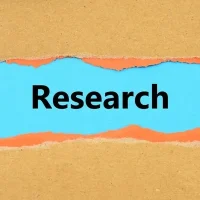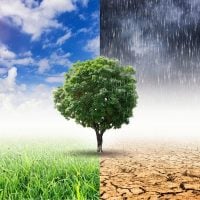The International Union for Conservation of Nature (IUCN) stands as a pivotal organization in the global conservation landscape. Founded in 1948, IUCN is the world’s first global environmental organization, bringing together governments, civil society organizations, scientists, and local communities to promote sustainable development through sound environmental practices. With its headquarters in Gland, Switzerland, IUCN operates in over 160 countries, making it a truly international entity dedicated to the preservation of biodiversity and the sustainable use of natural resources.
IUCN is perhaps best known for its Red List of Threatened Species, which serves as a critical indicator of the health of the world’s biodiversity. This comprehensive inventory assesses the conservation status of thousands of species, providing essential data that informs conservation strategies and policy decisions. The organization’s work extends beyond species conservation; it also encompasses ecosystem management, climate change adaptation, and the promotion of nature-based solutions to global challenges.
By integrating scientific research with practical conservation efforts, IUCN plays a vital role in shaping a sustainable future for our planet.
The Role of IUCN in Protecting Nature
IUCN’s multifaceted approach to conservation encompasses a wide range of activities aimed at protecting nature and promoting sustainable practices. One of its primary roles is to provide a platform for knowledge sharing and collaboration among various stakeholders. By facilitating dialogue between governments, NGOs, and local communities, IUCN fosters an environment where innovative conservation strategies can emerge.
This collaborative approach is essential for addressing complex environmental issues that often transcend national borders. In addition to fostering collaboration, IUCN also engages in rigorous scientific research to inform its conservation initiatives. The organization conducts assessments and studies that provide valuable insights into biodiversity trends and threats.
For instance, IUCN’s Global Biodiversity Outlook reports synthesize data from various sources to highlight the state of the world’s biodiversity and the effectiveness of conservation efforts. These reports not only raise awareness about the urgent need for action but also serve as a call to arms for policymakers and practitioners alike. By grounding its work in science, IUCN ensures that its strategies are evidence-based and effective in achieving tangible results.
Collaborations and Partnerships
Collaboration is at the heart of IUCN’s mission, as the organization recognizes that effective conservation requires the collective efforts of diverse stakeholders. IUCN has established numerous partnerships with governments, NGOs, academic institutions, and private sector entities to enhance its impact on global conservation efforts. These collaborations often take the form of joint projects, knowledge-sharing initiatives, and capacity-building programs that empower local communities to engage in conservation activities.
One notable example of IUCN’s collaborative efforts is its work with the World Wildlife Fund (WWF) on the Global Forest and Climate Change Program. This initiative aims to address deforestation and promote sustainable forest management practices across various regions. By leveraging each organization’s strengths—WWF’s grassroots engagement and IUCN’s scientific expertise—the partnership has successfully implemented projects that not only protect forests but also support local livelihoods.
Such collaborations exemplify how pooling resources and expertise can lead to more effective conservation outcomes.
Conservation Projects and Initiatives
IUCN is involved in a myriad of conservation projects and initiatives that span the globe, addressing a wide range of environmental challenges. One prominent initiative is the Protected Areas Programme, which aims to establish and manage protected areas that safeguard critical habitats and biodiversity hotspots. Through this program, IUCN works with governments and local communities to create effective management plans that balance conservation goals with sustainable development needs.
Another significant project is the Species Survival Commission (SSC), which focuses on the conservation of threatened species worldwide. The SSC brings together experts from various fields to develop action plans for species recovery, habitat restoration, and community engagement. For instance, IUCN has played a crucial role in the recovery efforts for species such as the Arabian Oryx and the California Condor, both of which were on the brink of extinction.
By implementing targeted conservation strategies and fostering community involvement, these initiatives have led to remarkable success stories that inspire further action.
Advocacy and Policy Influence
In addition to its on-the-ground conservation efforts, IUCN plays a vital role in advocacy and policy influence at both national and international levels. The organization actively engages with policymakers to promote policies that prioritize biodiversity conservation and sustainable resource management. Through its extensive network of members and partners, IUCN advocates for the integration of environmental considerations into development planning and decision-making processes.
One of IUCN’s key contributions to global policy discussions is its involvement in international agreements such as the Convention on Biological Diversity (CBD) and the Paris Agreement on climate change. By providing scientific expertise and facilitating dialogue among stakeholders, IUCN helps shape policies that address pressing environmental challenges. For example, during the CBD’s Conference of the Parties meetings, IUCN has been instrumental in advocating for ambitious targets to halt biodiversity loss and promote sustainable land use practices.
This advocacy work not only raises awareness about critical issues but also mobilizes resources for effective conservation actions.
Future Challenges and Goals
Challenges to Global Biodiversity
Climate change remains one of the most pressing issues, as rising temperatures and extreme weather events disrupt habitats and threaten species survival. Additionally, habitat loss due to urbanization, agriculture, and industrial development continues to pose significant risks to biodiversity.
Innovative Solutions and Collaborative Action
Addressing these challenges requires innovative solutions and a commitment to collaborative action among all stakeholders. To navigate these complexities, IUCN has set ambitious goals for the coming years. The organization aims to strengthen its focus on nature-based solutions that leverage ecosystems to address climate change while promoting sustainable development.
Empowering Communities and Fostering Sustainability
By advocating for policies that prioritize ecosystem restoration and protection, IUCN seeks to create resilient landscapes that can withstand environmental pressures. Furthermore, enhancing community engagement in conservation efforts will be crucial for achieving long-term success. By empowering local communities to take ownership of their natural resources, IUCN can foster sustainable practices that benefit both people and nature.
In conclusion, the International Union for Conservation of Nature plays an indispensable role in global conservation efforts through its commitment to protecting nature, fostering collaborations, implementing impactful projects, advocating for sound policies, and addressing future challenges head-on. As we move forward into an uncertain future marked by environmental change, IUCN’s work will be more critical than ever in ensuring a sustainable planet for generations to come.








































